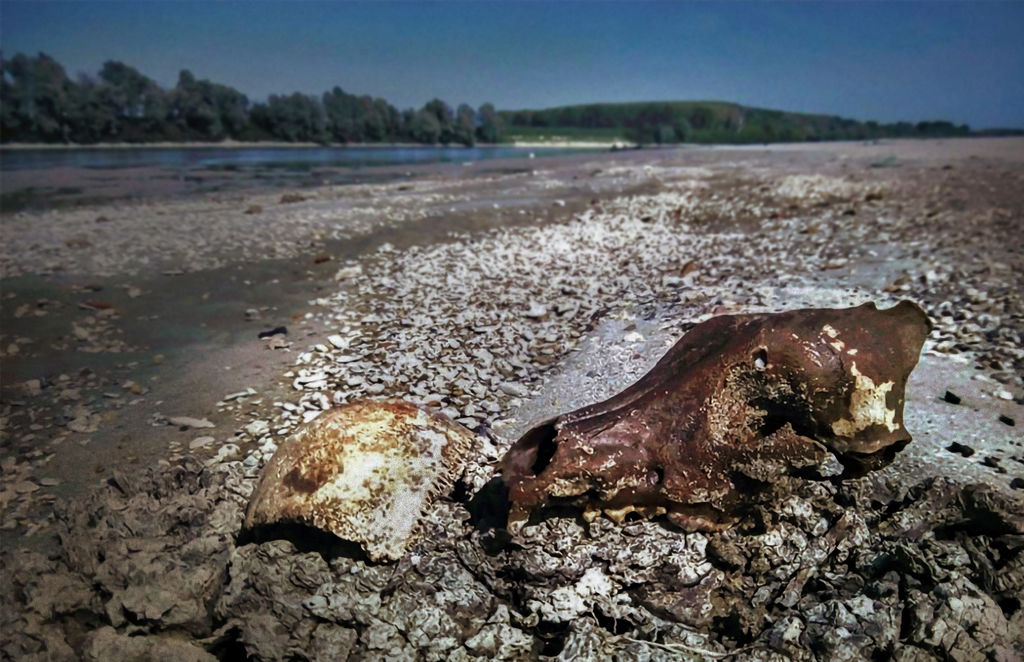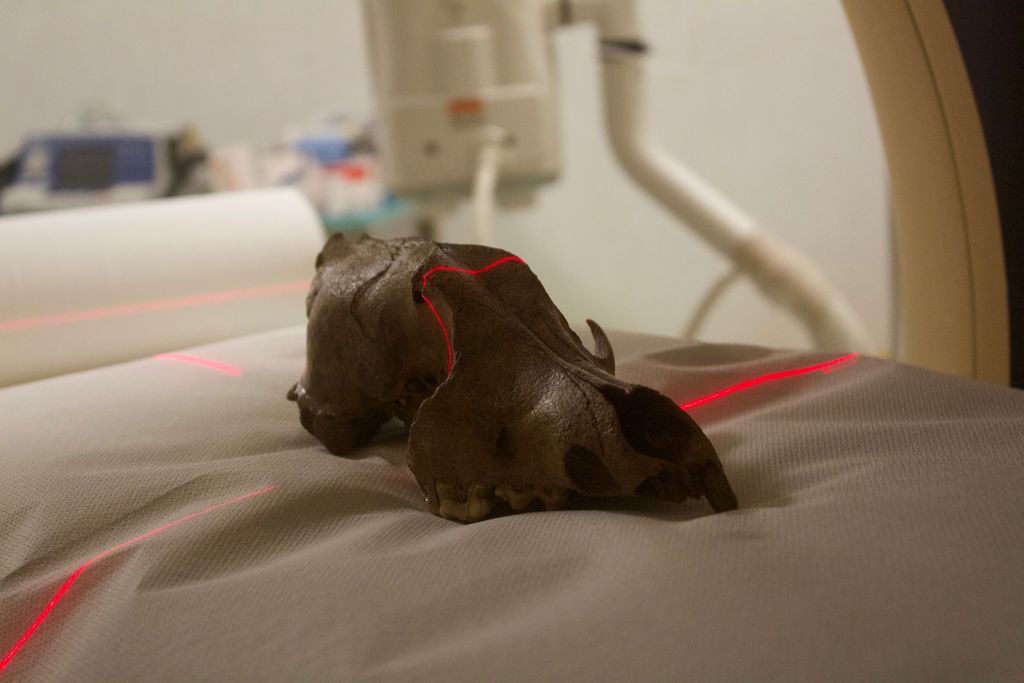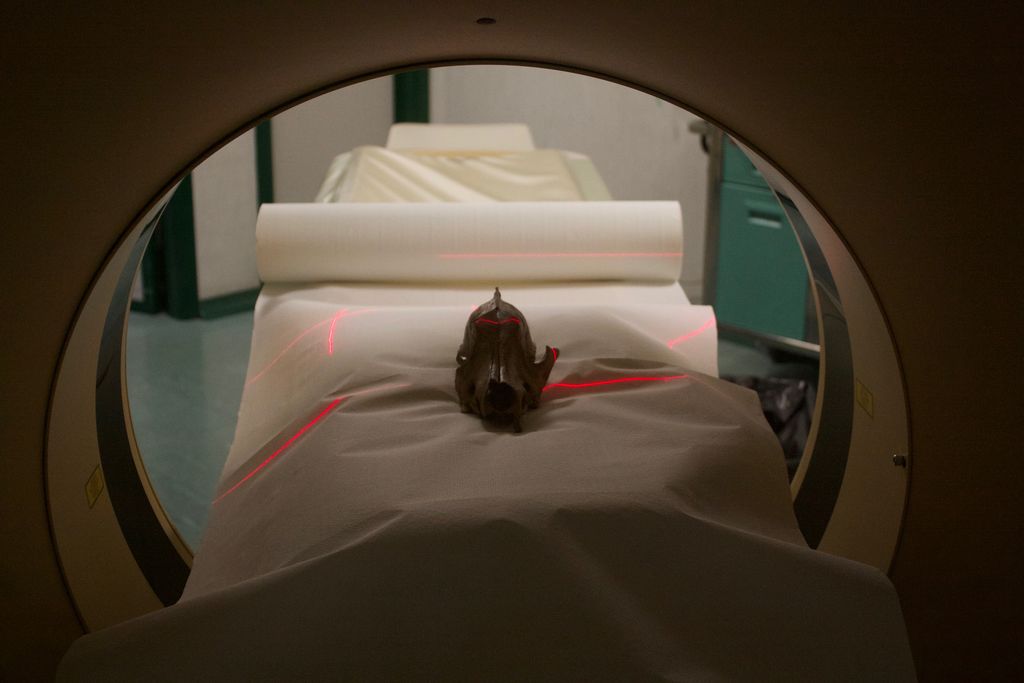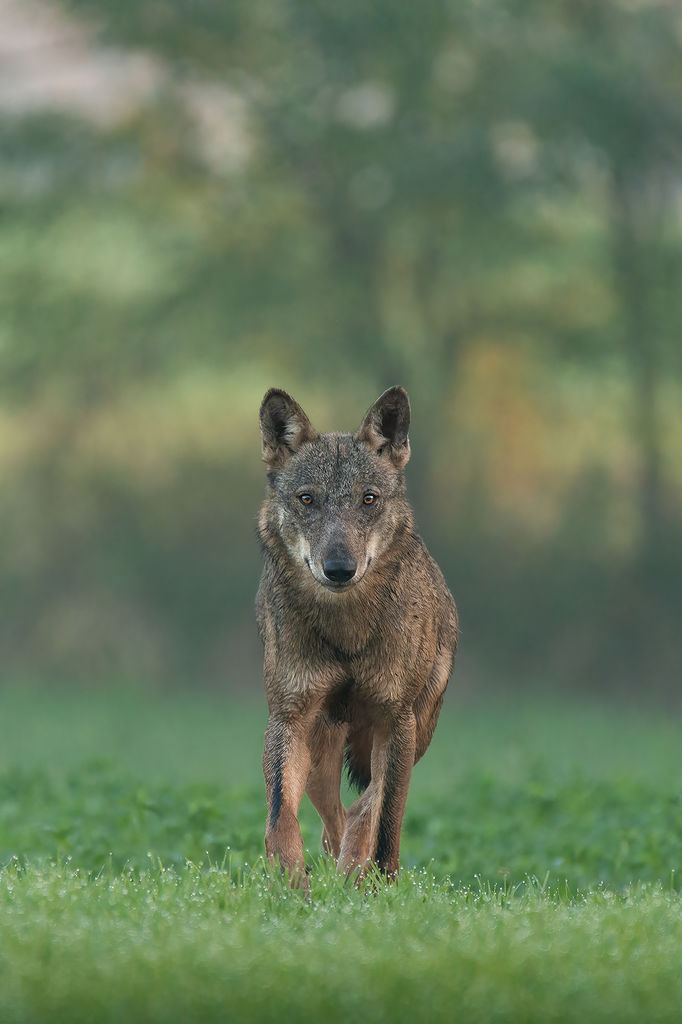
A howl from the Middle Ages
An important paper on the study of a fossil of a wolf's skull (Canis lupus), found in September 2018 in the Po River, northern Italy, by Davide Persico, Associate Professor at the University of Parma and senior author of the study, has recently been published.
The fossil, complete and in an excellent state of preservation, is in the Museo Paleoantropologico del Po in San Daniele Po, Cremona, northern Italy, and was already the subject of a palaeogenetic study in 2019. However, in this latest paper presents the first ever complete description based on a multidisciplinary approach.
Biometric analysis was adopted to identify the specimen, carry out its initial taxonomic classification, and determine its age and sex, all carried out at the Department of Chemistry, Life Sciences and Environmental Sustainability of the University of Parma.
The almost complete skull was found on the alluvial bar of the Po River called Boschi Marialuigia, on the right bank but in Cremona territory. Using Carbon 14 radiometric analysis, the fossil was dated back to the Middle Ages between 967 and 1157 AD.
The medieval period represented a crucial phase in the wolf's evolutionary history as it was marked both by significant ecosystem changes, especially in forested landscapes, and by heavy human persecution, which led to a dramatic demographic decline of the species. Although the wolf is undoubtedly one of the most iconic and widely studied predators of all time, osteological remains of medieval wolves in Europe are scarce, limiting our understanding of the dynamics and phenomena that influenced the evolution of past populations of this species. For this reason, the fossil skull under study represented an exceptional and rare research opportunity.
"Biometric analyses and those based on Computerised Tomography (CT)", says Raffaele Sardella of Sapienza University's Department of Earth Sciences, "indicate that the Po wolf falls within the cranial variability of the subspecies Canis lupus italicus that still exists in our peninsula today. "The wear of the teeth made it possible to trace the skull back to an adult individual between 6 and 8 years old, female," states Dawid Adam Iurino, first author of the article, an expert in palaeopathology and applications of virtual palaeontology at Sapienza. This specimen, continues the scholar, shows clear signs of severe periodontitis that caused the complete loss of the left canine, producing a large hole connecting the alveolus with the nasal cavity. This pathological condition probably severely debilitated the subject; however, it is impossible to establish whether the death was a consequence of this disease'.
Phylogenetic analyses, conducted at the University of Bologna's Laboratory of Ancient DNA, placed the gene pool of mitochondrial DNA (a small portion of the genome inherited only through the maternal lineage) of the specimen within the genetic variability of modern wolves, clearly distinct from that of dogs. In particular, the specimen falls within haplogroup 2 of wolves, i.e. it is part of the oldest maternal lineages that all derive from a common ancestor. In Europe, this haplogroup, starting at least 2,700-1,200 years ago, has largely been replaced by the more recent haplogroup 1, except in Italy, where only haplogroup 2 persists. The same analyses also revealed that the mitochondrial sequence of the specimen in question is very similar to the typical Greek one, called W15: there is only one mutation separating the two analysed sequences.
This DNA sequence represents part of the ancient genetic variability of the Italian wolf population now lost due to the negative impact of anthropogenic persecution perpetrated in the Middle Ages and, for western Europe in particular, over the last 150 years.
This multidisciplinary study provides the most complete description of a wolf sample from the Middle Ages in Italy and demonstrates how archaeozoological samples represent an essential source of information for understanding the dynamics, diversity and distribution of wolves between the present and the past.
Among the authors were Romolo Caniglia and Elena Fabbri, ISPRA researchers, Marta Maria Ciucani of the University of Copenhagen and Beniamino Mecozzi of Sapienza University of Rome.
References:
On the trail of medieval wolves: ancient DNA, CT-based analyses and palaeopathology of a 1000-year-old wolf cranium from the Po Valley (northern Italy) - Dawid A. Iurino, Elisabetta Cilli, Romolo Caniglia, Elena Fabbri, Beniamino Mecozzi, Marta Maria Ciucani, Raffaele Sardella, Davide Persico -Historical Biology (2022) https://doi.org/10.1080/08912963.2022.2071710
Further Information
Dawid A. Iurino
Department of Earth Sciences
dawid.iurino@uniroma1.it
Raffaele Sardella
Department of Earth Sciences
raffaele.sardella@uniroma1.it











